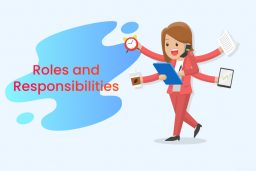
It’s no secret that companies that execute a well structured sales process see enormous benefits in scalable performance. So what is the cornerstone of a killer sales process?
Sales Pipeline
The answer is undoubtedly, the sales pipeline. Unfortunately, half of US SMEs report the lack of clearly defined sales pipeline as a primary roadblock against their ability to scale revenue growth. Why? Because solidifying a recipe for success that is repeatable across numerous individuals (sales team) interacting with countless different personalities (buyers) can be as difficult as it sounds if you don’t know how to break it down.
A sales pipeline at its core divides the sales process into meaningful stages. Each stage has specific goals, activities, responsibilities, clues, time frames, and probabilities which are associated. The aim is to connect with each of the buyer’s necessary thought process steps as they justify the value of what you are offering through problem solving confidence. As you might have guessed, this means that the pipeline stages must correlate with your buyer’s journey. As closely related as they are, don’t make the mistake of confusing them for being interchangeable. The buyer’s journey is them, the sales pipeline is you.
To begin defining the stages of your sales pipeline, the right step is to take a step back and start by saying 3 words “Solve their problem”. Everything else in your sales pipeline must keep these three magical words as their guiding light. Not only as one overall goal to make the sale, but as a goal in each individual stage. So naturally the next step is to clearly define what the problems that need to be solved at each stage of the pipeline. These problems translate into the goals of each stage.
Using this goal, we can then map the activities needed for a seller to overcome the problems at each stage and thus guide the deal forward in a strongly founded way. To prevent confusion, we can call the stage level problems roadblocks as we take a look at an example.
Pipeline Stages
| Stage | Buyer’s roadblock | Goal | Activity |
| Lead | I’m not considering you to solve my problem | Establish your product/service as a possible solution | Make initial contact |
| MQL | Do they understand my problem | Find emotional pain point | Get to know them and articulate the problem you solve |
| SQL | Does it solve my problem | Demonstrate value and show you can solve their problem | Perform a demo, provide past successes |
| Opportunity | I need to test it myself to be sure | Establish a plan to solve their problem | Get them on a POC so they can see it themselves |
| Commit | I’m not sure how much this helped me | Help articulate value they have received | Get commitment signed (close the deal) |
| MRR | Do I want to continue using this | Ensure they are still engaged | See if there is more you can help with |
Once the above examples have been filled in with the specifics of your businesses, the next critical piece is executing the process. A critical component often overlooked is the ability to run effective sales meetings. There is a great article that covers this piece more in-depth that can be found here.
Metrics in the Sales Pipeline
For the sales pipeline to become a control instrument, certain parameters have to be measured. The first step of this is standardizing on where you are going to measure within your pipeline followed by standardizing the terminology used. It is important that everyone on your sales team is on the same page with YOUR team’s definitions, as they often vary from company to company. Some examples include:
- Lead stage: Number of visitors via web traffic
- Commit stage: Number of closed deals
- SQL stage: Number of meetings set
Of course, this information can also be broken down to individual employees, regions, product lines and customer segments. As soon as reliable figures are available on these aspects, conclusions can also be drawn and improvements can be initiated. A capable company controlling will combine these observations with other KPIs into a key figure system that has more significance than an isolated number. The entire sales and revenue forecast depends on efficient reporting being implemented at this point.
Optimization of sales processes
Using the established allows you to identify bottlenecks within your sales pipeline. As they are all part of one journey, you are only as efficient as your least efficient stage. As an example, if the SQL stage has the highest percent of stalled deals, it may be due to how your rep approach setting up the next meeting or pushing the deal forward. The more metrics you have around each stage, the easier you can pinpoint exactly what is slowing you down. However over-burdening your sales reps with too many metrics or data points to track can cause them to lose efficiency therefore its recommended that you look into the extra pipeline analytical options out there as some of them will take care of this whole side for you via automatic data capture and pre-built reports.
Always Stay Mobile
Markets, metrics and methods change over time. Good sales leaders know that their process must constantly evolve if you want to experience scalable success. The trick is being able to identify which pieces need change and which are working and should be left alone. Consistently reviewing the deal stage data and asking your sales rep specific questions about their successes are the two most powerful ways to keep your sales pipeline evolving in the right direction. Welcoming change as an opportunity is a critical factor in leading proactively, just be sure to rely on the data as your guiding light.
Conclusion
A structured sales pipeline will make your sales organization incredibly more successful and is a necessity to scaling revenue growth. Every company should define, align, execute, and evolve their sales pipeline on a regular basis using data as the north star of navigation. Using this process, you’ll see accelerated growth that sustains and, equally importantly, you’ll know exactly why.




